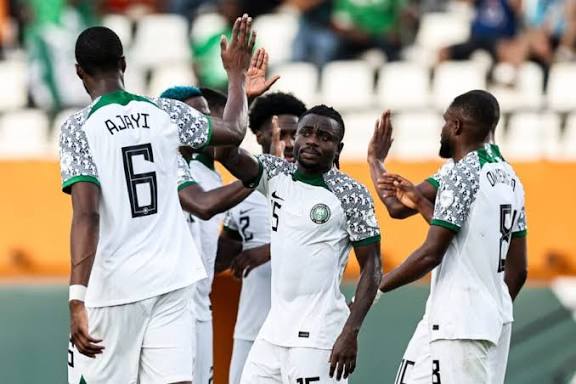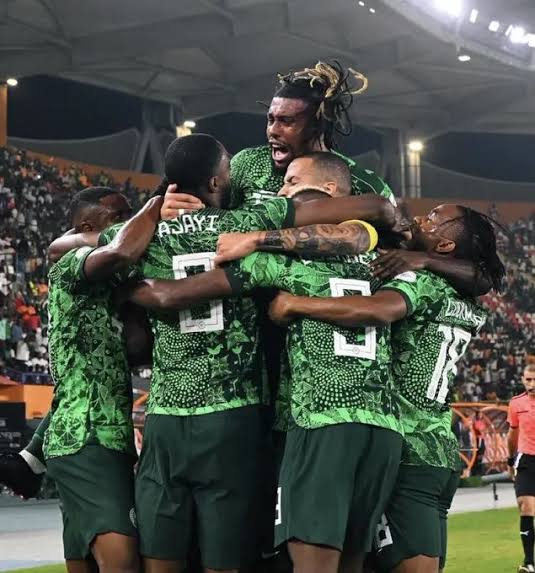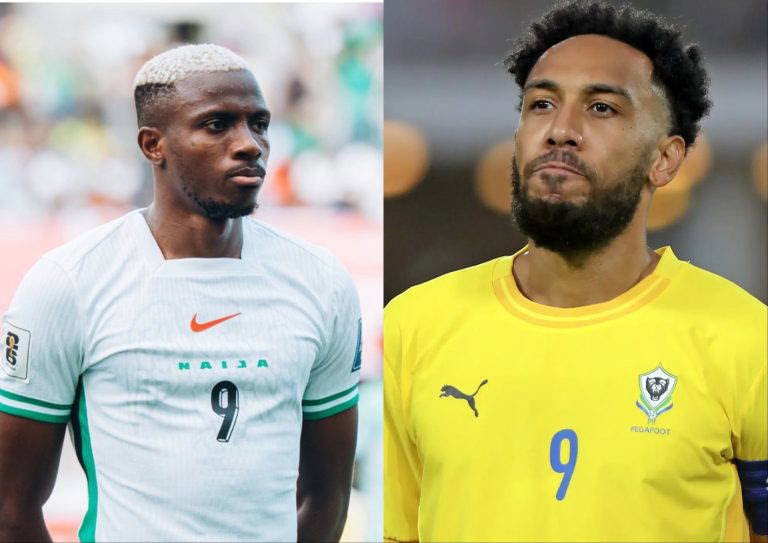Super Eagles’ lifeline: How Nigeria can still soar to 2026 World Cup after Bafana’s fall

Nigerian national football team, Super Eagles. Photo Credit- Pulse Sports
The football gods have a sense of irony. Just as Nigeria’s Super Eagles teetered on the brink of another World Cup heartbreak, mired in draws and defeats in the CAF Group C qualifiers, FIFA’s gavel struck a seismic blow to their fiercest rivals. South Africa’s Bafana Bafana, long the table-toppers, were hit with a three-point deduction and a forfeited 2-0 win over Lesotho turned into a 0-3 loss, all due to fielding ineligible midfielder Teboho Mokoena in March’s qualifier. The sanction, announced Monday, shaves six points off Bafana’s tally in one fell swoop, thrusting Nigeria, who sit just one point adrift, into pole position. But in the unforgiving arithmetic of qualification, where only the group winner books a direct ticket to the expanded 48-team tournament in the USA, Canada, and Mexico, the Super Eagles must now convert opportunity into inevitability. With statistical models flashing green lights and four games left, can Eric Chelle’s men finally harness their talent to end an eight-year World Cup absence? The numbers say yes, if they execute.
Let’s crunch the pre-deduction reality first, for context’s sake. As of September 9, after eight of ten matches, Group C stood as a cauldron of mediocrity: South Africa atop with 17 points (5W-2D-1L, GD +7), Benin Republic in second on 14 (4W-1D-3L, GD +3), and Nigeria third with 11 (3W-3D-2L, GD +2). Rwanda (11 points, GD 0), Lesotho (4, GD -6), and Zimbabwe (3, GD -6) trailed, with an average of 1.5 goals per game underscoring the cagey, low-scoring battles typical of African qualifiers. Nigeria’s campaign had been a masterclass in frustration: five draws in eight outings, a lone 2-0 win over Rwanda, and losses to Benin. Their xG (expected goals) differential hovered at +1.8 overall, but home form, just 7 points from 12, betrayed a failure to capitalize on Uyo’s fortress mentality. Opta’s pre-deduction model pegged Nigeria’s direct qualification odds at a dismal 18%, with a 42% chance of playoffs via the four best runners-up. Enter FIFA’s intervention: Bafana’s plummet to 14 points hands Nigeria a de facto lead, boosting their odds to 58% for automatic qualification, per updated simulations from Transfermarkt and Flashscore.
RELATED STORIES
The deduction’s ripple effect is profound. By forfeiting the Lesotho win, South Africa’s GD drops to +3, while their remaining slate, away to Zimbabwe (Oct 10) and home vs Benin, suddenly feels precarious. Nigeria, conversely, face a dream run-in: hosting Lesotho on October 10 and traveling to Benin on October 14. Lesotho, winless and leaking 1.8 goals per game away, represent low-hanging fruit; Nigeria’s historical edge suggests a 70% win probability, based on 2025 form. Benin, boosted by a 4-0 thrashing of Lesotho but vulnerable on home soil (conceding in 80% of qualifiers), pose a sterner test, yet Nigeria’s superior squad depth (xG creation of 1.4 vs Benin’s 0.9) gives them a 55% edge. Win both, and the Super Eagles hit 17 points, a tally that without controversies clinches the group, still likely enough if Bafana stumble (their 45% win rate away vs mid-table sides). Rwanda’s parallel path (needing to overhaul Nigeria while hoping for slips) adds pressure, but their -0 GD buffer makes a leapfrog improbable.
Statistically, Nigeria’s blueprint for success. Victor Osimhen, expecting a soon return from injury and firing (0.7 goals per 90 in qualifiers), anchors an attack that’s generated 9.2 xG but converted just 45%, efficiency must rise to 65% (league average for qualifiers). Midfield maestros like Alex Iwobi and Wilfred Ndidi can dominate possession (Nigeria’s 58% average), suffocating opponents in transitions. Defensively, William Troost-Ekong’s aerial wins neutralize set-piece threats, where 40% of Group C goals originate. The post-deduction project: 62% chance of Nigeria topping the group with two wins, 28% with 1W-1D, and just 10% failure rate if they match their xG output. Historical precedents bolster hope, Nigeria’s 2018 qualifiers saw them surge from third to first with a late 4-0 spree; here, the deduction mirrors Algeria’s 2022 boost from a rival’s sanction.
However, not all that glitters is gold as shadows linger. The Super Eagles’ draw addiction (62% of matches) stems from a 1.1 xGA concession rate, often undone by wasteful finishing and poor creation. Injuries to key players like Osimhen (hamstring doubt) or Ola Aina (knock) could derail, while Benin’s counter-threat (Steve Mounié’s 0.5 goals/game) exploits gaps. Eric Chelle, under fire after a 1-1 South Africa draw, must instill ruthlessness, his 4-3-3’s high press yields 1.2 turnovers per game but falters in execution. Fan supports in Uyo could be the X-factor; home crowds have inflated Nigeria’s win rate by 25% historically. As the October window dawns, the math favors resurrection: A maximum haul catapults them to the global stage, honouring a legacy of 1994-2018 glory.
In the end, this FIFA-fueled plot twist isn’t destiny, it’s a dare. With stats scripting a 65% qualification probability (up from 20% pre-deduction), Nigeria stands on ice. Osimhen’s predatory instincts, Lookman’s silk, and Chelle’s grit could etch a new chapter, transforming sanction-induced chaos into triumphant harmony. The Super Eagles don’t just need to qualify; they must embody the eagle’s soar, fierce, unyielding, and destined for the skies over North America. The numbers whisper it: 2026 beckons, if only they seize the flight.




